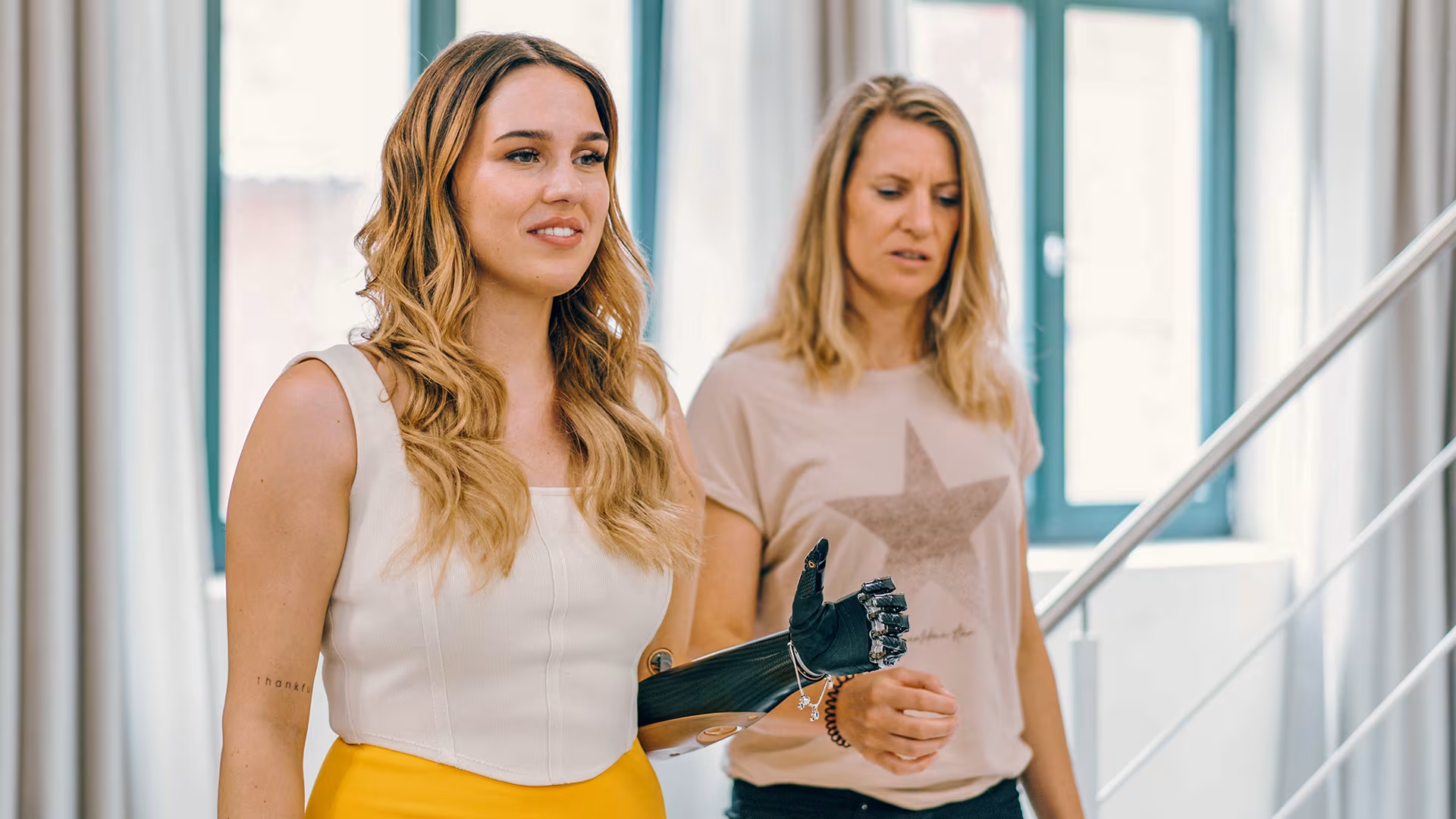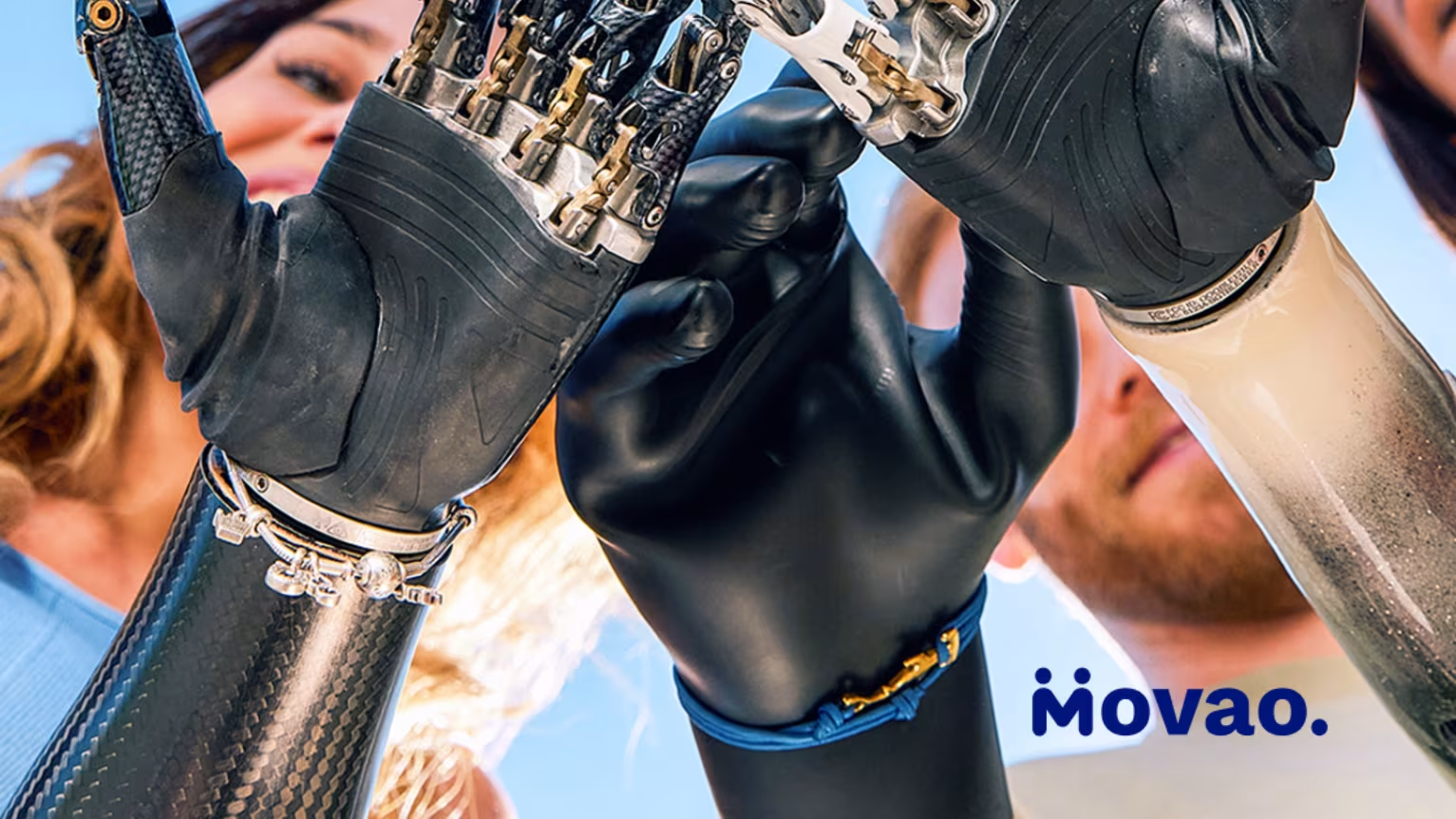


Protetičke ruke i šake
Istražite različite vrste i sve načine na koje ova posebna pomagala mogu osnažiti ljude kod kuće, na poslu i tijekom svakodnevnog života.
Istražite različite vrste i sve načine na koje ova posebna pomagala mogu osnažiti ljude kod kuće, na poslu i tijekom svakodnevnog života.
Što su i kako funkcioniraju
Protetičke ruke i šake su pomagala dizajnirana za podršku korisnicima kojima nedostaje dio šake ili ruke. Mogu ih koristiti pojedinci koji su izgubili ekstremitet uslijed ozljede, nezgode ili bolesti, kao i odobe koji imaju razliku u udovima zbog urođenog stanja.
Ponekad ih nazivamo "protezama gornjih ekstremiteta", ova pomagala dolaze u nekoliko varijanti: od jednostavnih "pasivnih" ruku do tehnološki naprednih "bioničkih" šaka koje oponašaju različite pokrete ruku. Nastavite čitati kako biste razumjeli različite vrste protetičkih ruku, kako rade i kako podržavaju širok raspon dnevnih aktivnosti.
Što protetička ruka ili šaka mogu učiniti za vas
Iako protetičke ruke i šake ne mogu u potpunosti zamijeniti prirodni ekstremitet, one mogu biti podrška korisnicima na mnogo različitih i vrijednih načina. Pravo pomagalo može pomoći vratiti nečiju neovisnost i pokretljivost, pomoći mu u svladavanju svakodnevnih zadataka, vratiti se na posao ili mu jednostavno pomoći da izgleda i osjeća da se normalno.
Neke protetičke ruke i šake dolaze s posebnim značajkama, poput hvataljki i kuka, koje mogu pomoći u određenim zadacima. Naprednija pomagal često su dizajnirana tako da izgledaju i kreću se oput ljudske ruke.
Tri vrste proteza za ruke i šake
Ovakve proteze obično dolaze u tri različita oblika: kozmetička ili "pasivna" pomgala, pomagala na tjelesni pogon i mioelektrična pomagala. Svaka vrsta proteze ima svoje jedinstvene funkcije i mogućnosti.
Sve tri vrste mogu podržati korisnike na različite načine, ovisno o potrebama, njihovim ciljevima i aktivnostima, te veličini, obliku i položaju njihovih bataljaka. Pravi izbor za svakog korisnika može ovisiti o svim spomenutim čimbenicima, a ortopedski tehničar je uvijek na raspolaganju kako i pomogao odabrati i savjetovati o idealnom pomagalu.
Kozmetičke proteze za ruke i šake
Dizajnirane kako bi pružile prirodan izgled, ova vrsta proteze popularna je među korisnicima koji žele da njihova proteza izgleda što prirodnije i "normalnije". Kozmetika se može izraditi tako da odgovara tonu kože, spolu i fizičkim karakteristikama svake osobe, čineći ih što realističnijima.
Međutim, za razliku od drugih vrsta proteza, kozmetičke proteze obično ne nude funkcionalnost poput ruku. Obično su dizajnirani da izgledaju kao normalna ruka, a ne da funkcioniraju kao jedna.
Unatoč ovom ograničenju, mnoge osobe s amputacijom smatraju da im nošenje kozmetike pomaže da se osjećaju ugodnije i sigurnije u društvenim situacijama.

Protetičke ruke i šake koje pokreće tijelo
Ova vrsta protetičkog pomagala osobama daje mogućnost kontrole njihove zamjene praveći određene pokrete ramenima, prsima ili preostalim udovima. Ova vrsta proteze obično koristi kablove, remenice i specijalizirani pojas za rukovanje protetskom šakom ili rukom.
Ove su proteze poznate po svojoj izdržljivosti i snazi, što ih čini prikladnima za hvatanje i podizanje predmeta i obavljanje drugih teških svakodnevnih aktivnosti.
Iako mogu zahtijevati više fizičkog napora za rad od drugih proteza, uređaji s tjelesnim pogonom također pružaju isplativu opciju za korisnike koji žele jednostavne, pouzdane i čvrste protetička pomagala.

Myoelektrična protetička ruka
Ova pomagala su najnaprednije i najsvestranije proteze za ruke danas dostupne na tržištu. Ponekad ih nazivmo i "bioničkim" rukama. Mioelektričnim protezama upravljaju vlastiti mišićni signali korisnika i napaja ih baterija. Elektrode na koži njihovih bataljaka mogu prepoznati živčane impulse iz mišića i koristiti ih za upravljanje motorima u protetičkoj ruci.
Mioelektrične ruke nude preciznu i svestranu kontrolu nad širokim rasponom pokreta prstiju i šake, što olakšava izvođenje mnogih različitih aktivnosti. Ove tehnološki napredne proteze također su funkcionalne i moderne.
Ottobock nudi nekoliko različitih mioelektričnih proteza, uključujući bebionic, Michelangelo i MyoHand VariPlus Speed. Svaki ima svoju jedinstvenu funkcionalnost i vrhunski dizajn.


bebionic
bebionic pomiče granice mogućnosti myoelektrične protetičke šake. Kombinacija napredne tehnologije i inovativnog dizajna rezultirala je udobnom, preciznom i intuitivnom šakom.
bebionic pomiče granice mogućnosti myoelektrične protetičke šake. Kombinacija napredne tehnologije i inovativnog dizajna rezultirala je udobnom, preciznom i intuitivnom šakom.

Michelangelo
Zahvaljujući razvoju tehnologije Michelangelo šaka s integriranim zglobom omogućuje fleksiju ekstenziju i rotaciju. Novost predstavlja palac koji može mijenjati položaj ručno ili uz myoelektrični signal - veći stupanj opsega pokreta.
Zahvaljujući razvoju tehnologije Michelangelo šaka s integriranim zglobom omogućuje fleksiju ekstenziju i rotaciju. Novost predstavlja palac koji može mijenjati položaj ručno ili uz myoelektrični signal - veći stupanj opsega pokreta.

MyoHand VariPlus Speed
VariPlus Sensor Hand kombinira zapešće koje se brzo odvaja s mehaničkim karakteristikama SensorHand Speed i upravljanje sustavom Electric Greifer DMC VariPlus.
VariPlus Sensor Hand kombinira zapešće koje se brzo odvaja s mehaničkim karakteristikama SensorHand Speed i upravljanje sustavom Electric Greifer DMC VariPlus.
Više informacija o protezama za ruku i šaku
Jeste li spremni za nastavak istraživanja? Inspirirajte se, otkrijte zajednicu i pomagala koji su vam potrebna za život s protezom.

Život s bioničkom šakom
Savjeti i trikovi korisnika Ottobockovih proteza za ruke. Podijelite s nama svoje priče i životne trikove.
Savjeti i trikovi korisnika Ottobockovih proteza za ruke. Podijelite s nama svoje priče i životne trikove.

Život s amputacijom
Saznajte više o različitim amputacijama ruku, kako se brinuti o protezama i bataljku i još mnogo toga.
Saznajte više o različitim amputacijama ruku, kako se brinuti o protezama i bataljku i još mnogo toga.

Pronađite zajednicu s Movao
Povežite se lokalno i globalno s amputircima i njihovim obiteljima.
Povežite se lokalno i globalno s amputircima i njihovim obiteljima.
Kontaktirajte nas
Ukoliko imate pitanja, slobodno nas kontaktirajte putem našeg kontakt obrasca.

